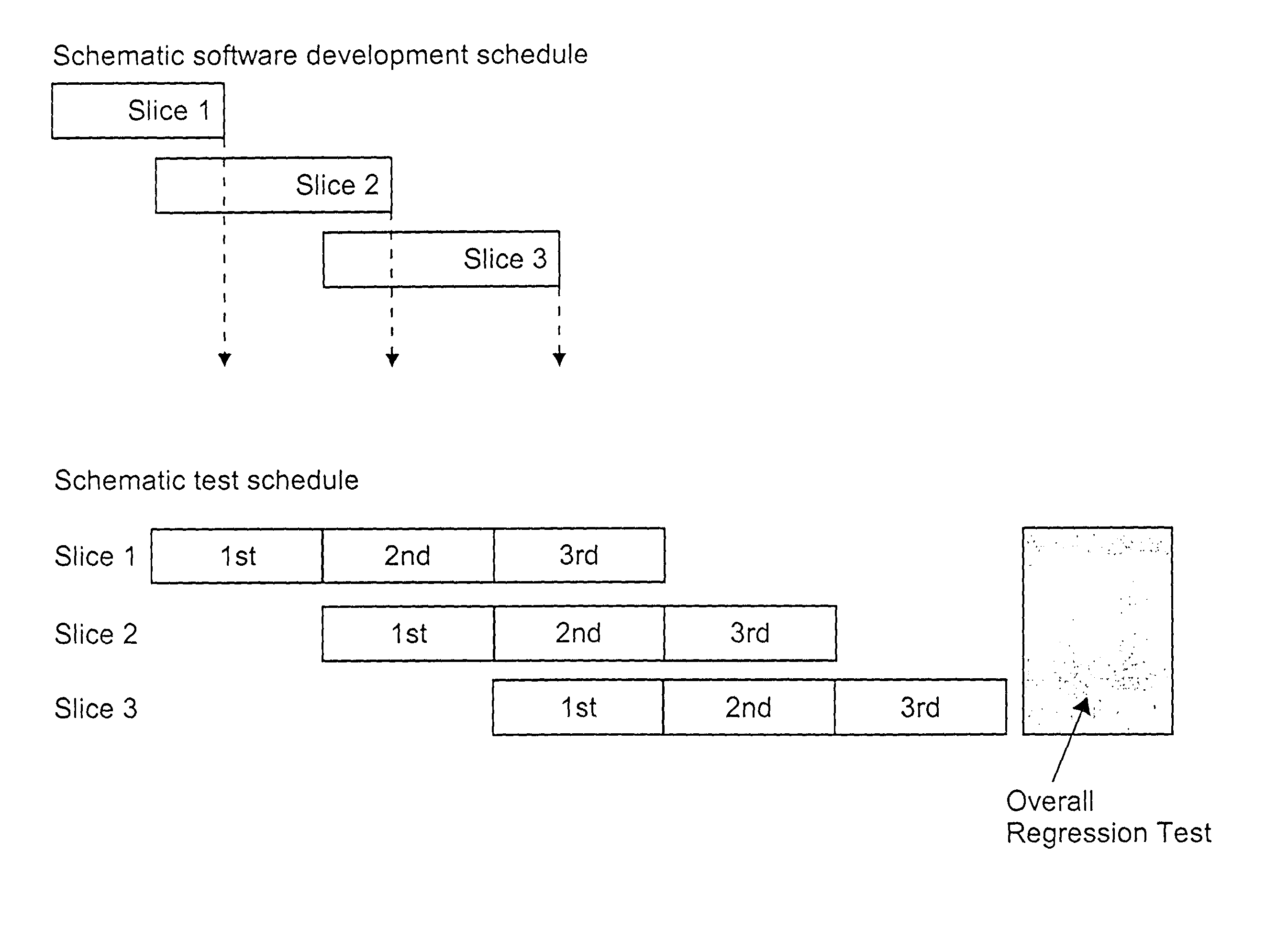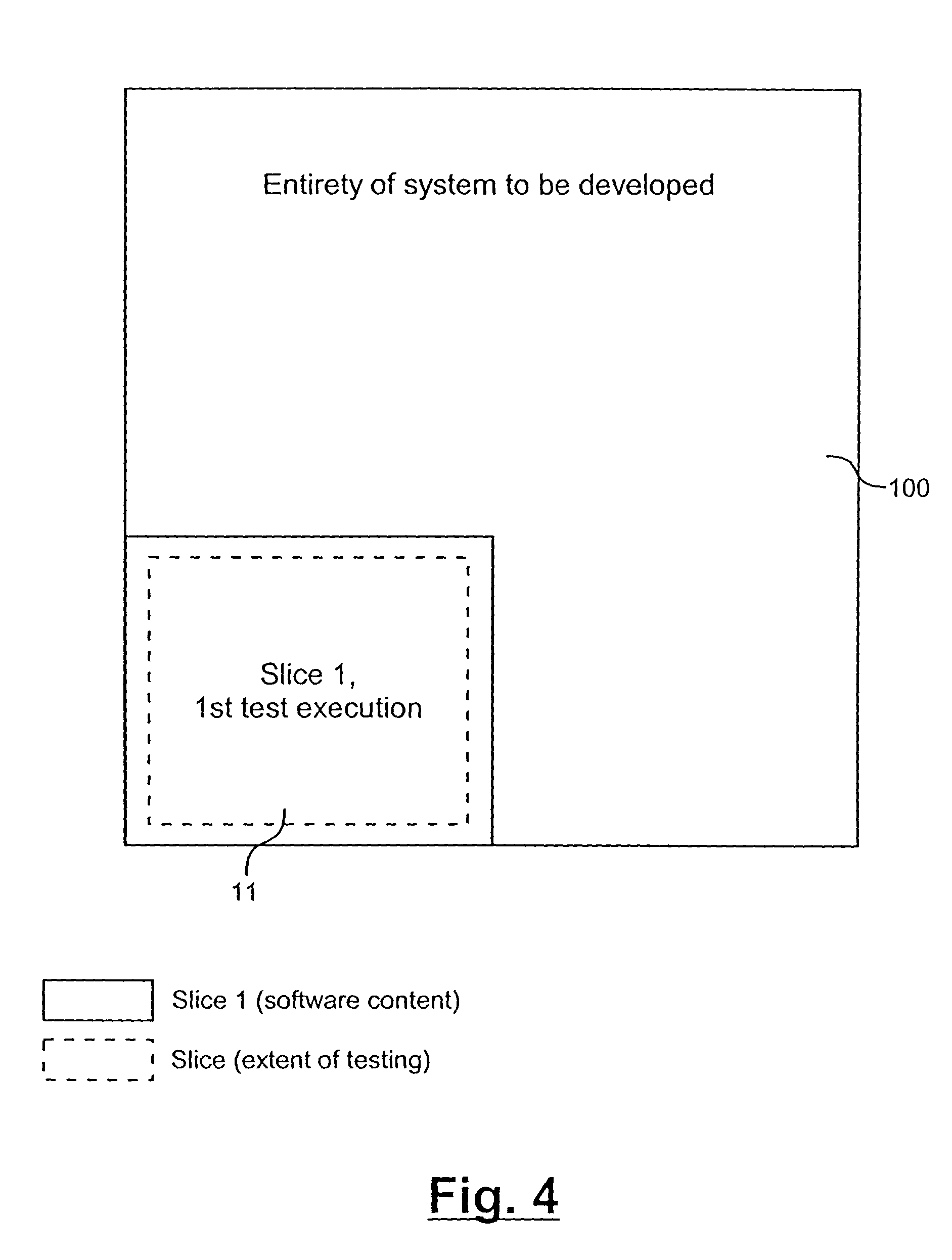Method of producing a software product
a software product and production method technology, applied in the direction of software design, instruments, error detection/correction, etc., can solve the problems of increasing the time required for the total development process, in particular the testing phase, and the system with the additional functions is required to be tested in a large amount, so as to reduce integration problems, minimize internal interfaces, and enhance business flexibility
- Summary
- Abstract
- Description
- Claims
- Application Information
AI Technical Summary
Benefits of technology
Problems solved by technology
Method used
Image
Examples
embodiment
Preferred Embodiment
[0072]FIGS. 4-7 schematically illustrate consecutive development steps for producing a software product according to a preferred embodiment of the present invention.
[0073]At the beginning of the development process, the functionality to be implemented with the software product to be developed is analyzed and the overall functionality of the target system is defined. This includes the software architecture of the system and a clear definition of user interfaces, reports, broadcasting functions and the data types and parameters used. The entirety of the target system is indicated by reference numeral 100 in FIG. 1. This system is divided up into a plurality of functional units or slices, in the shown example into three slices. The number of slices used may by chosen according to the specifications and particulars of the specific software product. Preferably, the first slice comprises basic functionality like system management functions. The following slices then pr...
PUM
 Login to View More
Login to View More Abstract
Description
Claims
Application Information
 Login to View More
Login to View More - R&D
- Intellectual Property
- Life Sciences
- Materials
- Tech Scout
- Unparalleled Data Quality
- Higher Quality Content
- 60% Fewer Hallucinations
Browse by: Latest US Patents, China's latest patents, Technical Efficacy Thesaurus, Application Domain, Technology Topic, Popular Technical Reports.
© 2025 PatSnap. All rights reserved.Legal|Privacy policy|Modern Slavery Act Transparency Statement|Sitemap|About US| Contact US: help@patsnap.com



